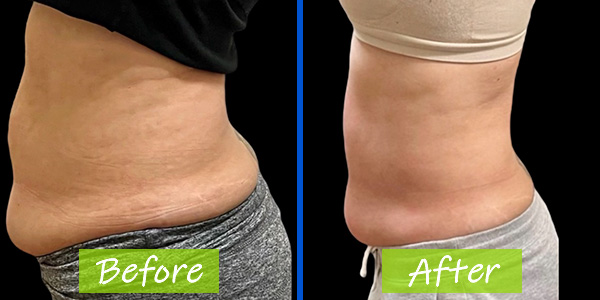FitShop Weight Loss Clinic & Med Spa Services Albuquerque
Comparing Non-Invasive and Invasive Aesthetic Procedures
In recent years, the field of aesthetic medicine has seen remarkable advancements, offering a wide range of treatments to enhance appearance and address various cosmetic concerns. These treatments can be broadly categorized into non-invasive and invasive procedures. Understanding the differences, benefits, and potential drawbacks of each can help individuals make informed decisions about their aesthetic goals. This article provides a comprehensive comparison of non-invasive and invasive aesthetic procedures.
Non-Invasive Aesthetic Procedures
Non-invasive procedures are designed to improve appearance without surgery. They typically involve minimal downtime, lower risk, and fewer side effects compared to invasive treatments. Here are some common non-invasive procedures:
Botox and Dermal Fillers
- Botox: This treatment involves the injection of Botulinum toxin to temporarily paralyze muscles, reducing the appearance of fine lines and wrinkles.
- Dermal Fillers: These are injectable gels made from substances like hyaluronic acid, used to restore volume, smooth out wrinkles, and enhance facial contours.
Laser Treatments
- Laser Hair Removal: Uses concentrated light to target and destroy hair follicles, reducing hair growth.
- Laser Skin Resurfacing: Removes damaged skin layers, promoting collagen production and improving skin texture and tone.
Chemical Peels
- A solution is applied to the skin to exfoliate and remove dead skin cells, revealing smoother, rejuvenated skin underneath. They vary in strength from mild to deep peels.
Microneedling
- Involves using fine needles to create tiny punctures in the skin, stimulating collagen production and enhancing skin texture and firmness.
CoolSculpting
- A fat-freezing procedure that targets and eliminates fat cells without surgery. It’s commonly used for body contouring in areas like the abdomen, thighs, and love handles.
Invasive Aesthetic Procedures
Invasive procedures typically involve surgery, incisions, and longer recovery times. They often provide more dramatic and long-lasting results compared to non-invasive treatments. Common invasive aesthetic procedures include:
Facelift (Rhytidectomy)
- A surgical procedure to reduce sagging skin, tighten facial muscles, and remove excess skin, resulting in a more youthful appearance.
Liposuction
- Involves the surgical removal of fat deposits from areas such as the abdomen, thighs, and arms through small incisions. It’s often used for body contouring.
Breast Augmentation
- Surgical enhancement of breast size and shape using implants or fat transfer. It’s one of the most popular cosmetic surgeries.
Rhinoplasty
- Also known as a nose job, this surgery reshapes the nose to improve appearance and sometimes breathing function.
Tummy Tuck (Abdominoplasty)
- A procedure that removes excess skin and fat from the abdomen and tightens the underlying muscles, resulting in a flatter and firmer abdominal profile.
Key Comparisons
Effectiveness and Longevity
- Non-Invasive: While effective for mild to moderate concerns, results are usually temporary and require maintenance treatments. For example, Botox and fillers need to be repeated every few months.
- Invasive: Typically offers more dramatic and permanent results. For instance, a facelift can last up to 10 years, and liposuction results are long-lasting if a healthy weight is maintained.
Recovery Time
- Non-Invasive: Minimal to no downtime. Patients can often return to their normal activities immediately after treatment.
- Invasive: Requires significant recovery time, ranging from a few days to several weeks, depending on the procedure.
Risks and Complications
- Non-Invasive: Lower risk of complications, but potential side effects can include bruising, swelling, and temporary discomfort.
- Invasive: Higher risk due to the nature of surgery, including infection, scarring, anesthesia complications, and longer-term recovery issues.
Cost
- Non-Invasive: Generally less expensive per session, but costs can accumulate with repeated treatments.
- Invasive: Higher upfront costs, but considering the longevity of results, they may be more cost-effective over time.
Suitability
- Non-Invasive: Ideal for individuals seeking subtle improvements without the commitment and risks of surgery.
- Invasive: Better suited for those looking for significant changes and are willing to undergo surgery and its associated recovery period.
Making the Right Choice
Choosing between non-invasive and invasive aesthetic procedures depends on several factors, including the individual’s cosmetic goals, budget, tolerance for downtime, and overall health. Consulting with a qualified and experienced aesthetic professional is crucial to determine the most appropriate treatment plan.
Conclusion
Both non-invasive and invasive aesthetic procedures offer unique benefits and can effectively address a range of cosmetic concerns. Non-invasive treatments provide subtle, temporary enhancements with minimal downtime, making them suitable for those seeking quick and easy improvements. In contrast, invasive procedures offer more substantial and lasting results but require a greater commitment in terms of recovery and cost. By understanding the differences and consulting with experts, individuals can make informed decisions to achieve their desired aesthetic outcomes.


